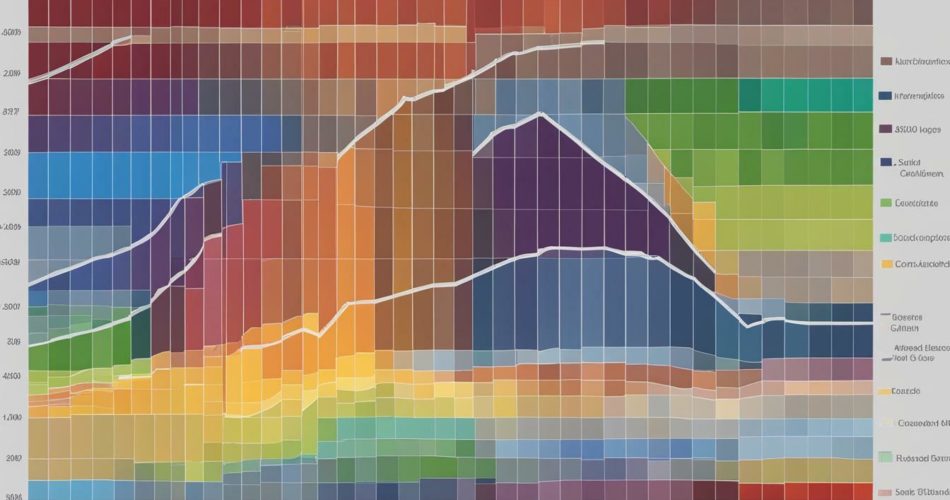Do you have a creative flair and want to pursue a career in graphic design? You’re probably wondering how long it will take to achieve your dream. The good news is that you don’t have to spend a decade in college before entering the workforce. Let’s explore the timeline and educational requirements for becoming a graphic designer.
Key Takeaways
- The length of education for graphic design varies depending on the degree level.
- An associate’s degree typically takes two years to complete and provides a solid foundation in graphic design.
- A bachelor’s degree takes four years and offers additional coursework, specialized training, and internships.
- A master’s degree is not required but can provide a competitive advantage in the field and takes an additional two years to complete.
- Continuing education and professional development are crucial to staying competitive in the industry.
Understanding the Basics of Graphic Design Education
So, you’ve got your eye on a career in graphic design. But how long does it take to become a pro? Let’s start with the basics: the duration of college for graphic design and the years of schooling you can expect to invest.
The typical education timeline for graphic designers can vary, but most professionals begin with an associate’s or bachelor’s degree. An associate’s degree in graphic design usually takes two years to complete, while a bachelor’s degree can take up to four years. However, keep in mind that the length of education for graphic designers can differ based on the specific program and any additional specializations you pursue.
During your years of schooling for graphic design, you’ll gain a solid foundation in design principles, typography, color theory, and other essential skills. You’ll also have the opportunity to develop a portfolio of work that showcases your creativity and technical abilities.
While formal education is crucial, don’t forget that the learning doesn’t stop there. Continuing education is essential in the ever-evolving field of graphic design. That means staying up-to-date with the latest software and design trends, attending workshops, and pursuing certifications to further enhance your skills throughout your career.
Associate’s Degree: A Solid Foundation
So, you’ve decided to pursue a career in graphic design? Great choice! To get started, you’ll need to invest two years in an associate’s degree program. But don’t let the relatively short duration of this program fool you – it provides a solid foundation for your future career.
| College Years Needed for Graphic Design Career | Length of Education for Graphic Designer |
|---|---|
| 2 Years | Associate’s Degree |
During your associate’s degree program, you’ll take essential courses in design theory, color theory, typography, and software skills. You’ll also develop a portfolio of work that showcases your design abilities. This portfolio will be crucial when applying for internships and entry-level graphic design jobs.
By the time you complete your associate’s degree, you’ll have a solid understanding of graphic design principles and techniques. You’ll be ready to embark on the next phase of your education, if you choose to do so.
Bachelor’s Degree: Taking Your Skills to the Next Level
Congratulations! You’ve completed your associate’s degree and have developed a solid foundation in graphic design. But why stop there when you can take your skills to the next level?
Investing four years in a bachelor’s degree program will not only expand your knowledge but also provide you with more advanced career opportunities. During this time, you’ll dive deeper into specialized areas such as typography, branding, and user experience, preparing you for the highly competitive world of graphic design.
| Year | What You’ll Learn |
|---|---|
| Year 1 | Design fundamentals such as color theory, layout, and composition. |
| Year 2 | Introduction to specialized areas such as web design, packaging, and publication design. |
| Year 3 | Advanced coursework in typography, branding, and user experience design. |
| Year 4 | Internship opportunities to gain real-world experience and build your portfolio. |
By the end of your bachelor’s degree program, you’ll not only have a more comprehensive understanding of graphic design but also a diverse range of skills that will make you a valuable asset to any design firm. And who knows, you may even decide to pursue a master’s degree to further elevate your design prowess.
Is a Bachelor’s Degree Worth the Investment?
In short, yes. While a bachelor’s degree in graphic design requires a significant investment of time and money, the benefits are worth it. According to the Bureau of Labor Statistics, graphic designers with a bachelor’s degree generally earn more and have a better chance of advancing in their careers than those without one. Plus, a bachelor’s degree program will not only teach you valuable design skills, but also equip you with critical thinking, problem-solving, and communication abilities that are essential for success in any field.
“It’s not just about learning how to use design software, it’s about developing a creative mindset and problem-solving skills that will set you apart in the industry.” – Graphic Design Professor
So if you’re serious about pursuing a career in graphic design, consider investing in a bachelor’s degree program. It’s a decision that will pay off in the long run and provide you with the skills and knowledge you need to succeed in this exciting and ever-evolving field.
- Elevate your skills and knowledge with a bachelor’s degree in graphic design.
- Expand your expertise in specialized areas such as typography and user experience.
- Gain real-world experience through internship opportunities.
- Prepare yourself for advanced career opportunities.
Stay tuned for our next section as we explore the benefits of pursuing a master’s degree in graphic design.
Master’s Degree: Elevating Your Design Prowess
Congratulations, smarty pants! You’ve already completed a bachelor’s degree in graphic design, but you’re not done yet. If you really want to take your design skills to the next level, consider pursuing a master’s degree.
Now, before you roll your eyes and groan at the thought of more school, hear us out. A master’s degree can give you a serious advantage in the competitive world of graphic design. Not only will you have the chance to specialize in a specific area of the field that interests you, but you’ll also have access to more advanced training and research opportunities.
A typical master’s program in graphic design lasts about two years, bringing your total education timeline to around six years. That may seem like a long time, but think about how much you’ll learn and grow during those extra two years of schooling.
But wait, there’s more! With a master’s degree in graphic design, you’ll be able to apply for higher-level positions and potentially earn a higher salary than your peers with just a bachelor’s degree. Plus, you’ll have the opportunity to work on more high-profile projects and make a name for yourself in the industry.
Of course, pursuing a master’s degree isn’t for everyone. It can be expensive, time-consuming, and you’ll need to have a serious passion for graphic design to justify the investment. But if you’re up for the challenge, go for it!
Just remember, your education doesn’t have to stop there. Even after you complete your master’s degree, you can continue to enhance your skills and knowledge through ongoing professional development opportunities such as workshops, certifications, and online courses.
So, don’t be afraid to take your design prowess to new heights with a master’s degree. Your future self will thank you for it.
Continuing Education and Professional Development
Congratulations, you’ve made it through the formal education years and are now a skilled graphic designer. But don’t get too comfortable, as the industry is ever-evolving, and to stay competitive, you must continuously improve your skills and knowledge.
One way to do this is through workshops and conferences. Attending industry events, such as the annual AIGA Design Conference or Creative Works Conference, can help you stay up to date with the latest trends and techniques. Plus, you’ll get a chance to network with other industry professionals and potentially land some exciting career opportunities.
Another way to enhance your skills is through certifications. A certification program can demonstrate your proficiency and commitment to staying current in the field. Adobe, for example, offers various certification programs, including Adobe Certified Expert and Adobe Certified Associate, which can validate your expertise in specific Adobe software.
Online courses are also an excellent option for continuing education. Platforms like LinkedIn Learning, Udemy, and Skillshare offer a variety of courses, from beginner to advanced, and cover topics ranging from typography to UX design. Plus, you can learn at your own pace and on your schedule.
Remember, education doesn’t have to end with a diploma or degree. As a graphic designer, you must stay curious and eager to learn. So, continue to seek out new opportunities to develop your skills, expand your creativity, and stay ahead of the curve.


